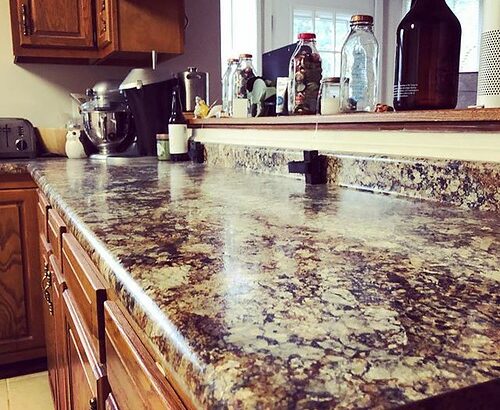
Welcome to the world of pristine, germ-free kitchen surfaces! Whether you’re a cooking enthusiast or professional chef, keeping your kitchen clean and sanitized is crucial for the health and safety of your family and guests. In this article, we will explore the best practices for sanitizing kitchen surfaces to ensure a sparkling and hygienic culinary workspace. Get ready to discover the top tips and tricks for maintaining a spotless and sanitized kitchen that would make even the most discerning health inspector nod in approval. Let’s dive into the wonderful world of kitchen sanitation!
Table of Contents
- Meet Your New Best Friend: Hot, Soapy Water
- Embrace the Power of Microfiber Cloths
- Don’t Just Wipe—Scrub with Purpose!
- When Life Gives You Lemons, Use Them on Countertops
- The Secret Weapon: Baking Soda Blasts
- Vinegar: Your Tangy Ally Against Grime
- Disinfectant Sprays: Timing is Everything
- Target Those Cutting Boards: The Cross-Contamination Culprits
- Is Your Sponge a Germ Haven? Microwave it!
- High Touch Areas: Knobs and Handles Need Love Too
- Questions & Answers For Sanitizing Kitchen Surfaces: Best Practices
- Concluding Remarks
Meet Your New Best Friend: Hot, Soapy Water
When it comes to keeping your kitchen surfaces free of harmful germs and bacteria, hot, soapy water is your new best friend. It is a simple, effective, and budget-friendly way to ensure that your countertops, cutting boards, and other food preparation areas are clean and safe. By following best practices for sanitizing kitchen surfaces, you can create a healthy environment for you and your loved ones.
One of the best ways to sanitize kitchen surfaces is by using hot, soapy water. This method is not only easy, but it’s also highly effective in removing germs and bacteria. To properly sanitize your kitchen surfaces, follow these steps:
- Fill a sink or a large basin with hot water.
- Add a small amount of dish soap to the water.
- Use a clean cloth or sponge to scrub the surfaces thoroughly.
- Rinse the surfaces with clean water.
- Allow the surfaces to air dry or use a clean towel to dry them.
By following this simple daily routine of best practices, you can keep your kitchen surfaces clean and safe for food every day.
Embrace the Power of Microfiber Cloths
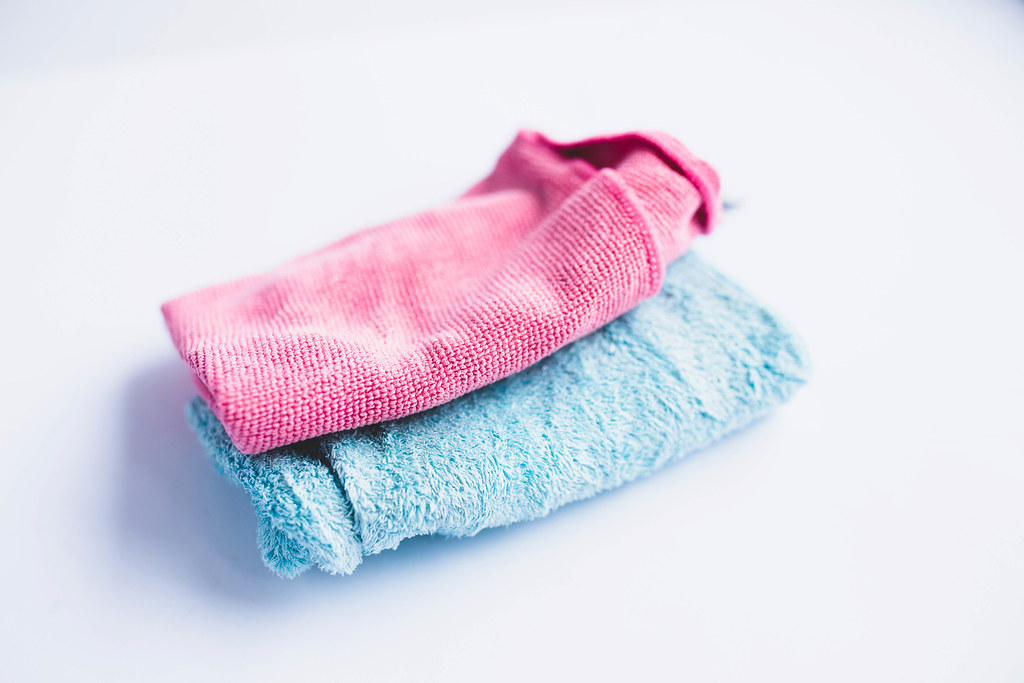
When it comes to sanitizing kitchen surfaces, it’s important to use the right tools for the job. Enter microfiber cloths: these unassuming cleaning essentials pack a powerful punch when it comes to ridding your kitchen of germs and bacteria.
Here’s why you should use microfiber cloths for a cleaner, healthier kitchen:
First and foremost, microfiber cloths are incredibly effective at trapping and removing germs from kitchen surfaces. The microscopic fibers in these cloths are designed to cling onto dirt, grime, and bacteria, making them a top choice for sanitizing kitchen counters, appliances, and more.
Additionally, these cloths are reusable and can be machine washed, making them an eco-friendly alternative to disposable cleaning wipes. With their gentle but effective cleaning action, microfiber cloths are a game-changer for anyone looking to maintain a clean and sanitized kitchen environment.
Don’t Just Wipe—Scrub with Purpose!
When it comes to keeping our kitchen surfaces clean, it’s not just about wiping them down. We need to scrub with purpose to ensure that we are effectively sanitizing our kitchen. Here are some best practices for sanitizing kitchen surfaces to keep your cooking environment safe and healthy:
- Start by cleaning the surface with a mixture of soap and water to remove any visible dirt and grime.
- Use a disinfectant spray or wipes that are effective against bacteria and viruses, such as Lysol or Clorox.
- Don’t forget to scrub high-touch areas like handles, knobs, and faucets thoroughly.
It’s also important to maintain a regular cleaning schedule to prevent the buildup of germs and bacteria. Consider creating a weekly cleaning routine to ensure that all surfaces are properly sanitized. Remember, a clean kitchen is a healthy kitchen!
| Product | Disinfectant Spray |
| Brand | Lysol |
When Life Gives You Lemons, Use Them on Countertops
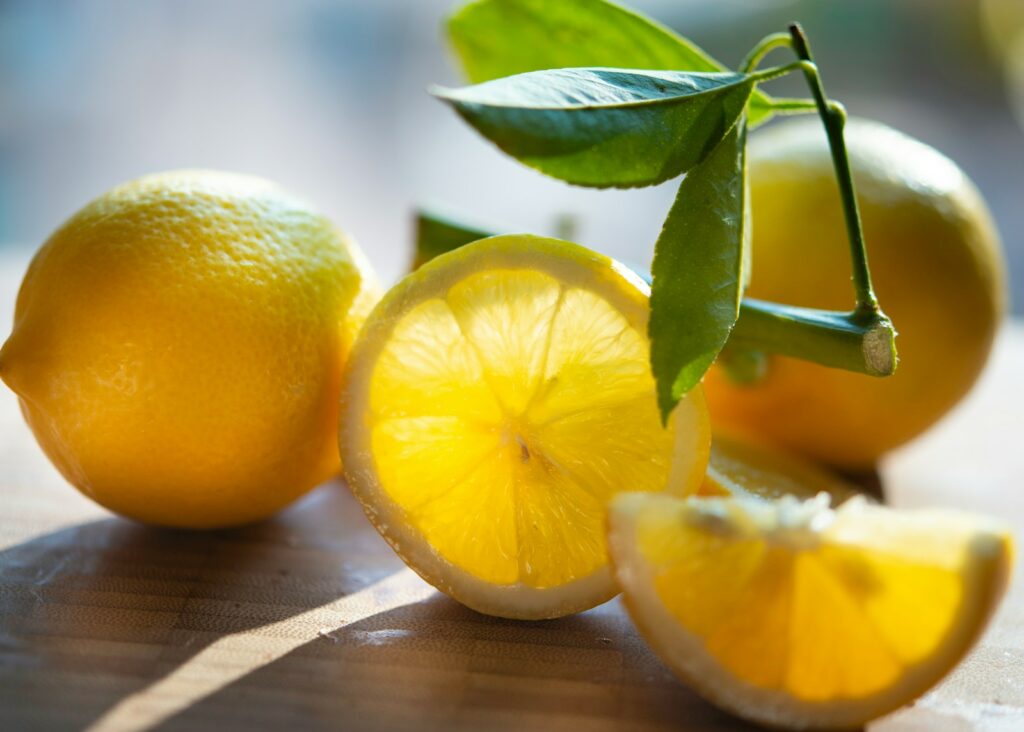
When it comes to keeping your kitchen surfaces clean and sanitized, lemons can be a surprising ally. Not only do they leave a fresh citrus scent, but their natural acidity makes them effective at killing bacteria and germs. Here’s how you can use lemons to sanitize your countertops:
First, cut a lemon in half and squeeze the juice onto the surface you want to clean. Then, using the lemon halves, scrub the surface, making sure to cover the entire area. Let the juice sit for a few minutes, then wipe down the surface with a damp cloth. Not only will your countertops be clean, but they’ll also smell wonderfully fresh!
Here are a few other best practices for sanitizing kitchen surfaces:
- Use a mixture of white vinegar and water to disinfect surfaces
- Regularly wipe down countertops with a disinfecting spray or wipes
- Avoid using harsh chemical cleaners, especially on surfaces that come into contact with food
| Company | Website |
|---|---|
| Clorox | clorox.com |
| Lysol | lysol.com |
The Secret Weapon: Baking Soda Blasts
When it comes to sanitizing kitchen surfaces, baking soda is the secret weapon you need in your cleaning arsenal. Not only is it affordable and readily available, but it’s also incredibly effective at blasting away germs and bacteria, leaving your kitchen sparkling clean and safe for food preparation. Here are some best practices for using baking soda to sanitize your kitchen:
- Mix a solution of 1 tablespoon of baking soda with 1 quart of water in a spray bottle.
- Spray the solution onto kitchen surfaces and let it sit for 5-10 minutes to allow the baking soda to effectively disinfect the area.
- Use a clean sponge or cloth to wipe down the surfaces, removing any remaining solution and leaving the area sanitized.
Additionally, you can create a paste with baking soda and water to scrub more stubborn stains and grease from kitchen surfaces. The gentle abrasiveness of the baking soda will help to lift away dirt and grime without damaging your countertops or appliances. With these simple and natural methods, you can keep your kitchen clean and safe without the use of harsh chemicals.
Vinegar: Your Tangy Ally Against Grime
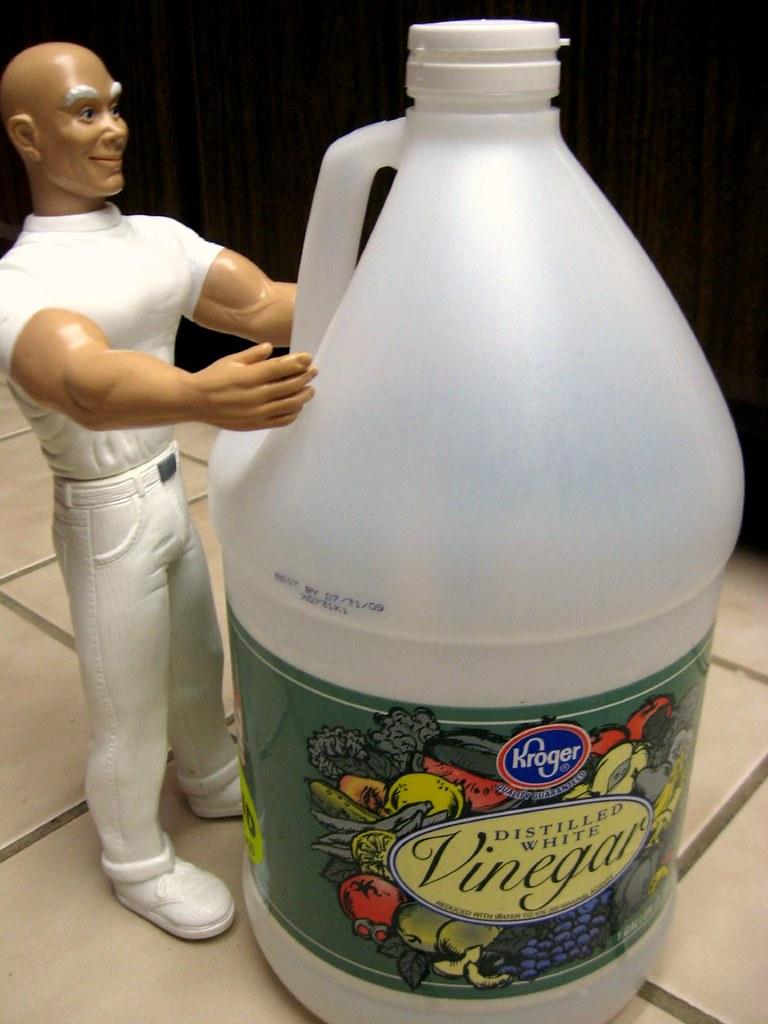
When it comes to sanitizing kitchen surfaces, vinegar can be your secret weapon against grime and bacteria. Not only is vinegar an all-natural, affordable solution, but it’s also highly effective at killing germs and removing tough stains. To make the most of vinegar as a kitchen sanitizer, here are some best practices to keep in mind:
- Mixing Ratio: For general cleaning, dilute vinegar with equal parts water. For tougher stains and grime, use a higher concentration of vinegar.
- Application: Use a spray bottle to apply the vinegar solution directly onto surfaces, then wipe with a clean cloth or sponge.
- Let It Sit: For stubborn stains, allow the vinegar solution to sit on the surface for a few minutes before wiping to break down the grime.
Remember to always test a small, inconspicuous area before using vinegar on a new surface, especially if it’s made of marble, granite, or other sensitive materials. With the right approach, vinegar can be your trusty ally in keeping your kitchen surfaces clean, safe, and sparkling.
Disinfectant Sprays: Timing is Everything
When it comes to keeping your kitchen clean and free from harmful bacteria, using disinfectant sprays at the right time is crucial. Sanitizing kitchen surfaces should be a regular practice, especially in areas where food is prepared. Here are some best practices to follow:
1. Timing: Choose the best time to sanitize your kitchen surfaces. For example, it’s ideal to clean and disinfect after preparing raw meat or handling produce.
2. Using the right product: Not all disinfectant sprays are created equal. Look for ones that are specifically designed for kitchen use and are effective against common bacteria and viruses.
As we all know, the kitchen is the heart of the home. But it’s also a hotspot for germs and bacteria. Sanitizing kitchen surfaces is essential to maintaining a healthy environment for you and your family. By following these best practices, you can ensure that your kitchen is not only clean, but also a safe place for food preparation.
Target Those Cutting Boards: The Cross-Contamination Culprits
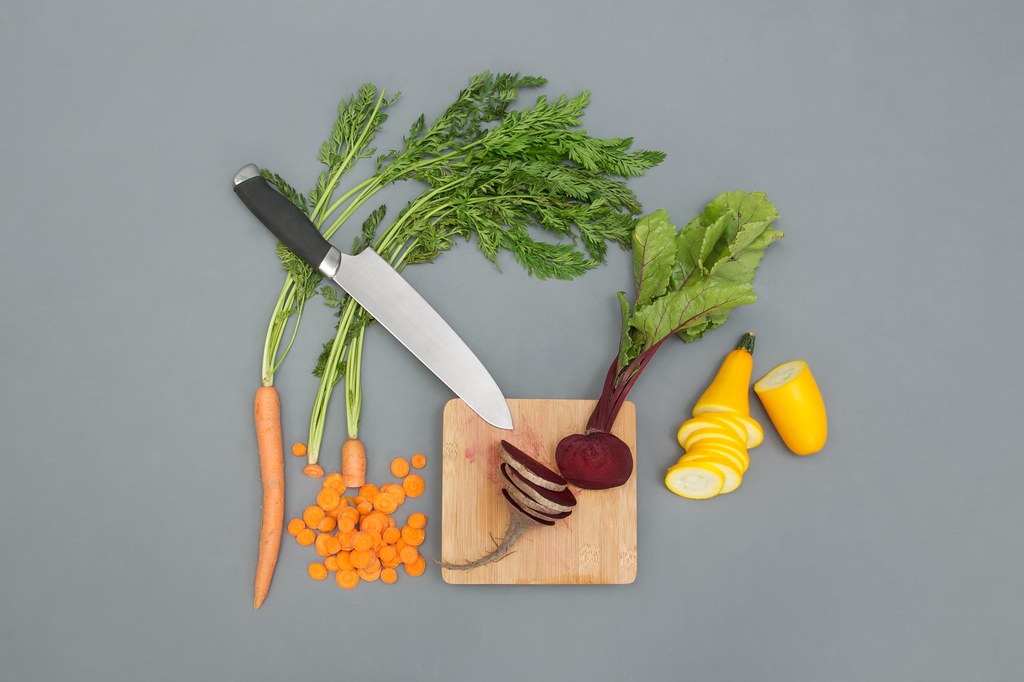
When it comes to sanitizing kitchen surfaces, especially cutting boards, it’s essential to follow best practices to ensure the safety of your food and prevent cross-contamination. Cutting boards can easily harbor harmful bacteria if not properly cleaned and sanitized, so it’s important to pay close attention to this commonly overlooked kitchen item.
To effectively sanitize your cutting boards, follow these best practices:
- Wash cutting boards with hot, soapy water after each use
- Use a separate cutting board for raw meat, poultry, and seafood
- Sanitize cutting boards using a solution of 1 tablespoon of unscented, liquid chlorine bleach per gallon of water
- Avoid using abrasive cleaners or scrubbers that can damage the surface of the cutting board
| Cleaning Frequency | Recommendation |
|---|---|
| After cutting raw meat, poultry, or seafood | Sanitize cutting board with bleach solution |
| Everyday Use | Wash cutting board with hot, soapy water |
By following these best practices, you can ensure that your cutting boards are properly sanitized, reducing the risk of cross-contamination and keeping your kitchen surfaces safe for food preparation.
Is Your Sponge a Germ Haven? Microwave it!

When it comes to sanitizing kitchen surfaces, one item that often gets overlooked is the humble sponge. Did you know that your sponge could be harboring harmful germs and bacteria? Don’t worry, there’s an easy solution to this problem – microwaving your sponge! The heat from the microwave can effectively kill off any germs and bacteria, making your sponge much safer to use.
To sanitize your sponge in the microwave, simply follow these steps:
- Wet the sponge to ensure it doesn’t catch fire in the microwave.
- Place the sponge in a microwave-safe dish and add water to cover it.
- Microwave the sponge on high for 1 minute.
- Carefully remove the hot dish from the microwave and let the sponge cool before using it again.
It’s recommended to do this at least once a week to keep your sponge free from harmful bacteria. This simple tip can go a long way in keeping your kitchen surfaces clean and safe for food preparation.
High Touch Areas: Knobs and Handles Need Love Too
When it comes to sanitizing kitchen surfaces, it’s easy to focus on countertops and sinks, but it’s important not to overlook high-touch areas like knobs and handles. These frequently used spots can harbor bacteria and germs, so it’s crucial to give them some love too. Here are some best practices for keeping these areas clean and germ-free:
- Use a disinfectant wipe to regularly clean doorknobs, cabinet handles, and refrigerator handles.
- Don’t forget about the stove knobs – they can easily pick up grease and bacteria, so be sure to give them a good wipe down as well.
- For wooden handles, use a gentle cleaner to avoid damaging the finish, and be sure to thoroughly dry them to prevent warping.
By paying attention to these small but important details, you can help prevent the spread of germs in your kitchen and keep your family healthy.
Questions & Answers For Sanitizing Kitchen Surfaces: Best Practices
Q: Why is it important to sanitize kitchen surfaces?
A: Sanitizing kitchen surfaces is crucial for preventing the spread of harmful bacteria and viruses that can cause foodborne illnesses.
Q: What are the best practices for sanitizing kitchen surfaces?
A: The best practices for sanitizing kitchen surfaces include using hot, soapy water to clean the surfaces, followed by a solution of bleach and water or a commercial kitchen sanitizer.
Q: How often should kitchen surfaces be sanitized?
A: Kitchen surfaces should be sanitized regularly, especially after handling raw meat, poultry, and seafood, and before preparing food.
Q: What are some common kitchen surfaces that should be sanitized?
A: Common kitchen surfaces that should be sanitized include countertops, cutting boards, sinks, refrigerator handles, and stove knobs.
Q: Are there any natural alternatives to commercial kitchen sanitizers?
A: Yes, vinegar and hydrogen peroxide are natural alternatives to commercial kitchen sanitizers and can be effective at killing germs on kitchen surfaces.
Q: What is the proper way to sanitize kitchen sponges and dishcloths?
A: Kitchen sponges and dishcloths should be sanitized by placing them in the dishwasher or soaking them in a solution of bleach and water. It is also important to replace them regularly to prevent the spread of bacteria.
Q: How can I ensure that I am effectively sanitizing my kitchen surfaces?
A: To ensure that you are effectively sanitizing your kitchen surfaces, you can use sanitizing test strips to check the concentration of the sanitizer solution and ensure it is at the proper level to kill germs.
Concluding Remarks
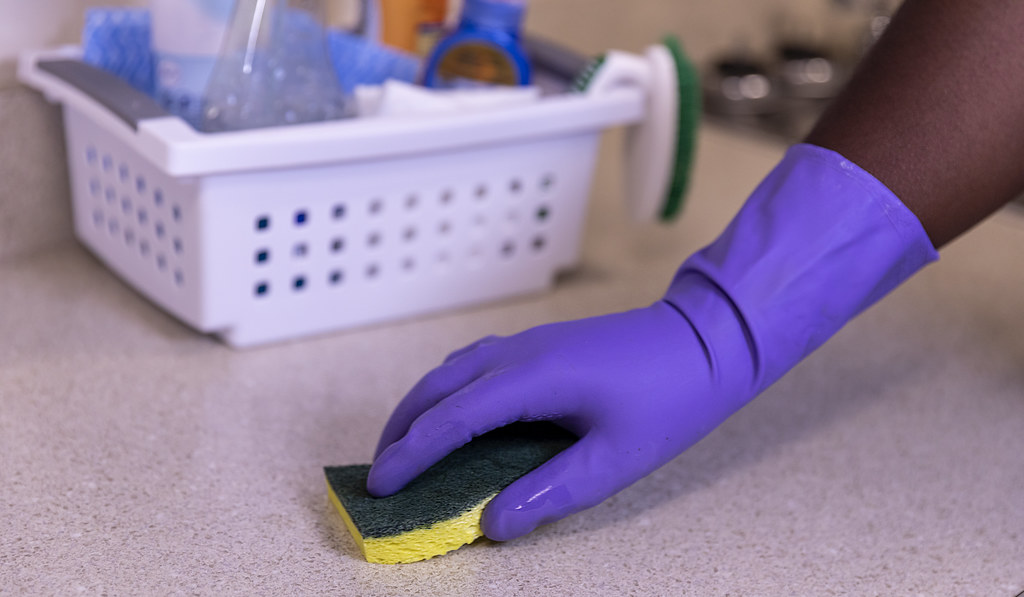
So there you have it, folks! By following these best practices for sanitizing kitchen surfaces, you can ensure that your cooking space remains clean, safe, and free from harmful bacteria. Remember to regularly clean and disinfect your countertops, cutting boards, and other kitchen surfaces to keep your family healthy and happy. With a little effort and the right techniques, you can create a sparkling, germ-free kitchen that you can be proud of. Happy cleaning, and happy cooking!
